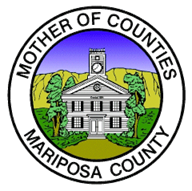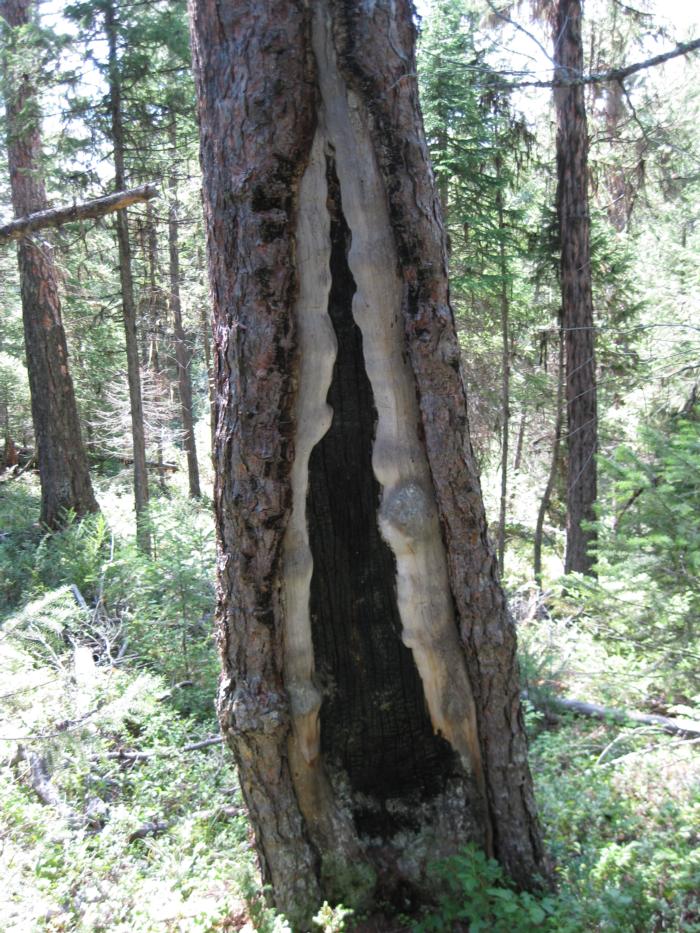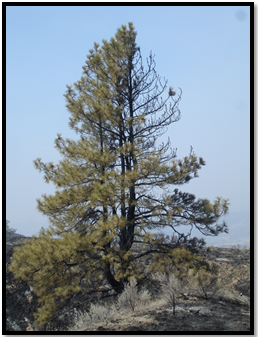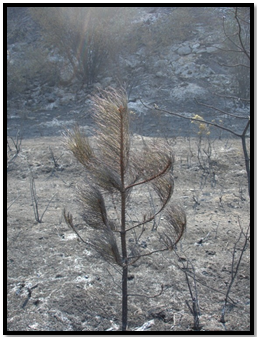|
Tree survival and death is largely dependent on fire severity, which is influenced by tree density, fuel load, terrain, and weather. Even in cases of severe fire behavior, most trees are not completely consumed, and the main trunk will remain standing although the leaves, needles and branches may be gone. Knowing which trees to remove and which to keep is not always straightforward. While conifers are highly susceptible to foliar damage, hardwoods have better potential to resprout foliage after fire. Judging tree survival is usually easier the next growing season after a fire. |
|
Tree Mortality
Tree Mortality
Falling hazards from burned trees are only a few of the issues to consider following fire. Trees weakened by fire are particularly susceptible to bark beetles and can be the catalyst for an outbreak. Fire can burn underground fuels such as stumps and root systems, creating tunnels that can trip and even burn the unsuspecting hiker. Fire can also burn inside the bole of a tree, leaving little evidence of damage outside while structurally weakening the tree.
In many cases, hazard trees should be removed as soon as possible. This not only removes the hazard, but creates a safe area for restoration efforts such as erosion control or revegetation. Dead trees may be salvaged to product timber, posts, poles and firewood if removed within 1 year of the fire. If not salvaged quickly, wood borers, drying, and fungal infection may degrade a tree’s structural qualities.
Dead trees contribute to fuel loads and significantly increase the future threat of wildfire, but they also have potential to provide habitat for wildlife. Consider your stewardship values and how a snag may further your forest management needs.
Assess Fire Injured Trees
Hardwoods
Fire damage on hardwoods can be indicated by the condition of the Cambium. This is the living layer of the tree:
- Cut small openings in the bark around the base of the tree.
- Living cambium will have a Pink, light color and will feel moist to the touch.
- Dead trees will have a brown, dark colored cambium.
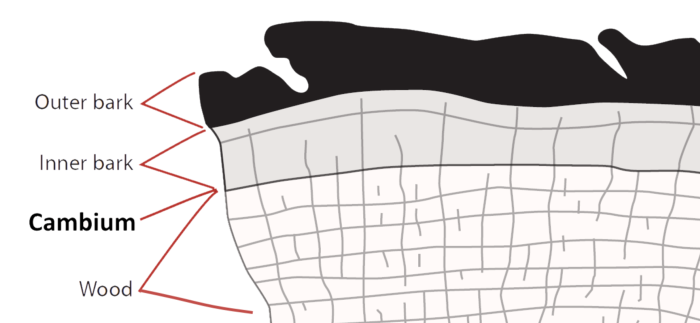
Unlike conifers, many hardwoods can survive even when all the foliage has burned off. Depending on when the fire occurred, some trees can "flush" new foliage in the same year as the fire.
Conifers
A less invasive way to assess conifer damage is by examining the foliage. Most conifers only put on one layer of foliage each year and cannot recover from severe crown damage.
Were any of the needles consumed or “set” in one direction by the fire?
If so, the tree likely received a lethal injury and is dead or will die.
|
|
|
The ponderosa pine on the left has 100% of its live crown scorched and some of the needles consumed. This tree is unlikely to survive its injuries. The ponderosa pine sapling on the right has needles “set” in the direction the heat and fire moved past it. This tree is unlikely to survive its injuries.
How much of the crown volume was scorched?
Calculate the percentage of the crown was scorched by the fire. An undamaged tree has 0% crown scorch while a tree with 100% crown scorch damage will appear to have a reddish color or no foliage at all. Trees with more than 75% crown scorched are highly unlikely to survive.

If uncertain, check if the cambium is moist. A slow burning fire may leave the foliage green, but kill the live cambium tissue of the tree.
- Large diameter trees have thicker bark and can endure more crown scorch than smaller diameter trees.
- This is a VERY rough assessment that does account for the injury dealt to the stem or roots. Work with a local RPF or NRCS specialist to confirm the assessment.
- Depending on the location, fires may remove enough competing vegetation to help a residual tree survive. Leaving borderline trees alone may provide it an opportunity to recover.
References
- Crisp, (2013) Hazards, Dead Trees are only a few issues to consider following a wildfire, Montana State Forestry
- Wood Borers and Bark Beetles After a Fire, Idaho State Forestry
- Hazard Tree Removal, NRCS
- McCreary et al (2011) Burned Oaks, Which Ones Will Survive?, UC Cooperative Extension
- Barkley et al, Predicting Mortality in Ponderosa Pine After a Wildfire, University of Idaho Extension
- Fire Injury to Trees, Washington State DNR
- Owen, (2007) Identifying Dead and Dying Conifers on Private Land in California, California Department of Forestry and Fire Protection
- Seybold et al, (2008) Bark Beetle Pest Notes, UC Integrated Pest Management
- Satomi (2018), Assessing Tree Damage, UC Cooperative Extension



